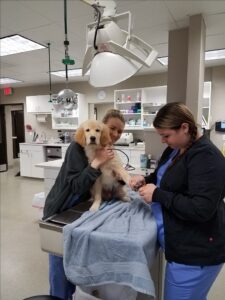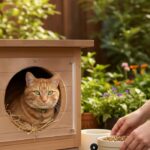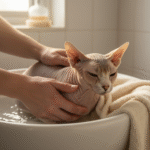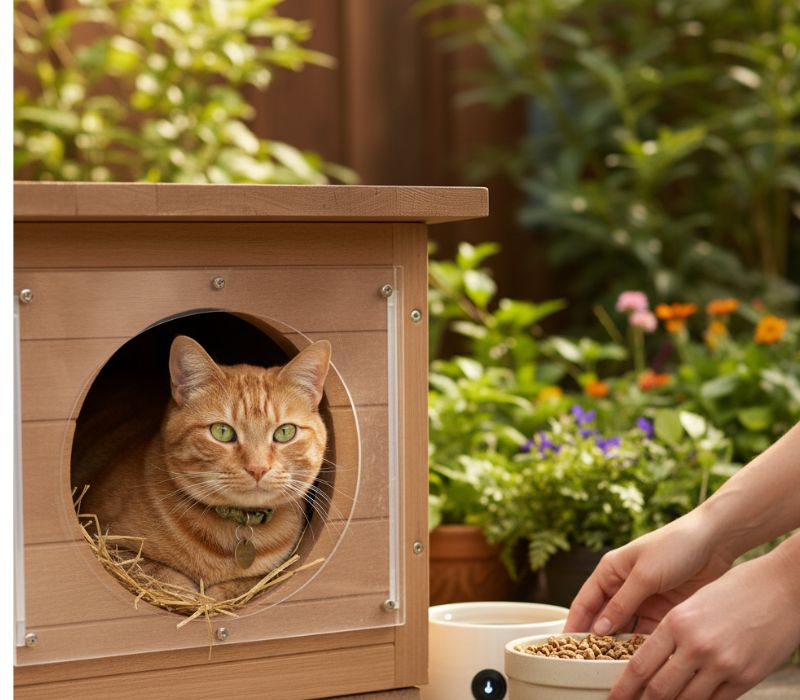As the crisp chill of winter settles in, it brings more than just cozy nights and festive moods — it also brings new challenges for pet owners. Whether you have a playful puppy, a calm senior cat, or a small companion animal, the colder months demand extra attention to their well-being. This comprehensive guide on Pet Care Tips will help you understand how to keep your pets healthy, comfortable, and protected during the winter season.
While pets have natural fur coats, that doesn’t always make them immune to freezing temperatures, dry air, or slippery conditions. Just like humans, they can suffer from dehydration, frostbite, or even respiratory issues when exposed to extreme cold. This is why understanding seasonal Pet Care Tips is crucial — it allows you to adjust your pet’s routine, diet, and environment to meet the demands of winter safely.
1. Indoor Comfort: Winter Pet Care Tips for a Warm Home
Winter often tempts us to bundle up indoors, and your pets deserve the same level of comfort. Make sure your home is warm, dry, and draft-free. Small pets, kittens, and short-haired dog breeds are particularly sensitive to cold weather, so creating a cozy environment is vital.
Provide them with soft bedding, warm blankets, or heated pet mats (only pet-safe ones). Avoid placing beds directly on cold tile or wooden floors — instead, raise them slightly off the ground or place rugs underneath to add insulation.
Keep your pets inside as much as possible, especially during frosty nights. If your dog needs to go outside, limit the duration and ensure they wear a properly fitted winter coat. Remember: if it’s too cold for you, it’s probably too cold for your pet.

2. Pet Care Tips for Nutrition and Hydration in Cold Weather
Winter can affect your pet’s appetite and hydration levels. The body uses more energy to stay warm, so balanced nutrition is key. Feed them high-quality food rich in proteins and essential fatty acids to support their coat and immune system.
Outdoor pets may need slightly larger portions to maintain body temperature, while indoor pets might require portion control to avoid winter weight gain. Always adjust food quantity based on their activity level, age, and breed.
Hydration is often overlooked in winter. Cold air can be dehydrating, and pets may drink less if their water bowls freeze or feel too cold. Make sure water is always available, fresh, and unfrozen. Consider using a heated bowl for outdoor pets to prevent ice formation.

3. Pet Care Tips for Protecting Your Pet’s Paws from Ice and Salt
Winter walks can be harsh on your pet’s paws. Ice, snow, and road salt can cause cracks, burns, or irritation. Always wipe your pet’s paws after walks using a damp cloth or pet wipes to remove any chemicals or salt residues.
Applying a paw balm before heading outside can act as a protective barrier. Alternatively, use pet boots if your pet tolerates them — they’re especially helpful for dogs walking on salted sidewalks or icy roads.
Regularly check between your pet’s toes for redness, cuts, or ice buildup. Keeping paw fur trimmed helps prevent snow from clumping and causing discomfort.

4. Winter Skin and Coat Pet Care Tips
Winter air tends to be dry, which can lead to flaky skin and a dull coat. Frequent indoor heating also removes moisture from the air, worsening dryness. Brush your pet’s coat regularly to stimulate oil production and improve circulation. This natural oil keeps their coat glossy and skin hydrated.
Avoid overbathing your pets during the cold season. Bathing too often strips the skin of natural oils that act as a barrier against dryness. When you do bathe your pet, use lukewarm water and moisturizing, pet-safe shampoos.
A humidifier in your home can also help maintain proper moisture levels for both you and your pets.

5. Pet Care Tips to Manage Outdoor Time Safely
Pets love exploring, but in winter, outdoor adventures should be brief and safe. Limit outdoor playtime and walks to the warmest parts of the day — usually late morning or early afternoon.
Observe your pet closely during walks. Shivering, lifting paws, or seeking shelter are clear signs that your pet is too cold. Bring them inside immediately and wrap them in a warm blanket.
Instead of long outdoor walks, create indoor exercise routines — play fetch in a hallway, use interactive toys, or teach them new tricks. Mental stimulation helps reduce boredom when outdoor time is restricted.

6. Essential Winter Pet Care Tips: Avoiding Seasonal Hazards
Winter introduces specific dangers that every pet owner should be aware of. Antifreeze, for example, is extremely toxic to pets, even in small amounts. Its sweet taste can attract them, but ingestion can lead to fatal poisoning. Always store antifreeze securely and clean up spills right away.
Space heaters and fireplaces are other potential hazards. Keep them out of your pet’s reach, and always supervise when these heat sources are on. Cats and dogs may try to get too close to the warmth, risking burns or fire accidents.
When walking your dog near roads, be cautious — snow can make it harder for drivers to see animals, especially in poor visibility. Reflective leashes, collars, or coats can improve their safety during evening walks.

7. Pet Care Tips for Senior and Sick Pets in Winter
Older pets or those with arthritis often struggle more during winter. Cold temperatures can increase stiffness and joint pain. Provide extra warmth with orthopedic pet beds and keep them away from cold floors or damp areas.
A gentle massage or light indoor activity can help keep their joints flexible. If you notice signs of discomfort such as limping, whining, or reluctance to move, consult your vet for pain management options.
Chronic conditions like diabetes or heart disease can also worsen in the cold, so regular veterinary checkups become even more important during winter months.

8. Veterinary Pet Care Tips for the Winter Season
Wintertime health checks are essential. Your vet can assess your pet’s weight, coat condition, and general health. They’ll also check for early signs of arthritis, skin problems, or seasonal allergies.
If your pet hasn’t had their annual check-up or vaccinations, winter is a great time to schedule one. Preventive care helps detect and address issues before they become serious.
Additionally, talk to your vet about adjusting diet supplements — omega fatty acids, for example, can help improve coat health and reduce dryness.

9. Emotional and Behavioral Pet Care Tips for Cold Days
Cold weather often means spending more time indoors, which can make pets feel bored or restless. Dogs and cats thrive on routine and engagement, so maintain consistent playtimes and interaction.
Offer extra cuddles, mental stimulation, and affection. Rotate their toys, introduce scent puzzles, or create small obstacle courses at home. Emotional comfort is as important as physical warmth — it strengthens the bond between you and your pet while keeping their mind sharp.

10. Emergency Pet Care Tips for Winter Preparedness
Winter storms and power outages can happen unexpectedly. Always have a pet emergency kit ready. Include essentials such as food, bottled water, medications, blankets, and a spare leash or harness.
If you must travel, never leave your pet unattended in a cold vehicle. Cars can act like refrigerators in freezing temperatures, posing serious risks within minutes.
Microchip your pet and keep their ID tags updated — snow can mask familiar scents, making it difficult for lost pets to find their way home.

11. Pet Care Tips for Understanding Winter Behavior Changes
Some pets may experience mild seasonal depression or reduced energy levels during shorter, darker days. A lack of sunlight and outdoor play can affect mood, appetite, and activity.
Encourage daylight exposure by opening curtains or taking short walks during sunny periods. Consistent exercise and interaction will help maintain their energy and emotional health.
If your pet appears unusually lethargic, consult your veterinarian to rule out any underlying medical causes.

12. Indoor Enrichment Pet Care Tips for Cold Weather
When it’s too cold to go outside, bring the fun indoors. Here are a few ways to keep your pet mentally and physically active:
- Interactive feeders or puzzle toys: They engage your pet’s mind and slow down eating.
- Hide-and-seek games: Hide treats or toys around the house to stimulate their sense of smell.
- Training sessions: Teach them new commands or tricks — this strengthens your bond and provides stimulation.
- Playdates (if safe): Invite another pet over for supervised indoor play.
These indoor activities not only entertain your pet but also reinforce good behavior and reduce anxiety.

1. How cold is too cold for pets?
According to expert Pet Care Tips, temperatures below 7°C (45°F) can be risky for small or short-haired pets. Limit outdoor time and monitor your pet for signs of discomfort like shivering or lifting their paws. Always bring them inside if they appear cold.
2. Can I walk my dog in the snow?
Yes, but always follow safe Pet Care Tips for winter walks. Keep walks short, use paw protection like boots or balm, and avoid icy or salted areas. Afterward, dry your pet completely and check their paws for irritation.
3. How often should I bathe my pet in winter?
One of the key Pet Care Tips for winter is to limit bathing. Overbathing removes natural oils that protect your pet’s skin. Bathe only when necessary, using moisturizing pet-safe shampoo, and ensure your pet is fully dry before going outside.
4. What are the signs of frostbite in pets?
Important Pet Care Tips for winter include recognizing early frostbite signs — such as pale, cold, or grayish skin, especially on ears, tails, and paws. If frostbite is suspected, wrap the area in a warm towel and contact your veterinarian immediately.
5. What’s the best indoor temperature for pets in winter?
Based on expert Pet Care Tips, most pets are comfortable in a room temperature between 20–23°C (68–74°F). Avoid sudden temperature drops, and ensure your pet’s bed is away from drafts or cold floors.
6. Do older pets need special care during winter?
Yes. Senior pets benefit from additional Pet Care Tips such as orthopedic bedding, gentle indoor exercise, and joint supplements. Keep them warm, monitor stiffness or limping, and consult a vet if symptoms worsen.
7. Can I use human blankets or heaters for my pets?
As part of responsible Pet Care Tips, it’s best to use pet-safe heating pads or blankets designed specifically for animals. Human heaters or electric blankets can overheat or cause burns if not used properly.
8. How can I keep my pet active indoors during cold weather?
Indoor Pet Care Tips include playing fetch in hallways, using treat puzzles, or teaching new tricks. Regular mental stimulation prevents boredom and helps maintain a healthy weight when outdoor time is limited.
Caring for pets in winter is more than just keeping them warm — it’s about preserving their overall well-being. Each season brings new responsibilities, and winter reminds us that love and attention are the best warmth we can provide.
By following these Pet Care Tips, you’re not only protecting your pet from the cold but also strengthening the emotional bond that makes them part of your family. Every small act — from wiping their paws to ensuring they have a soft, warm bed — adds up to a season of safety and comfort.
As you snuggle with your furry friend this winter, remember: their trust and companionship are the real warmth that fills your home.
Now, tell us — how do you keep your pet cozy and happy during the winter months? Share your thoughts or favorite tips in the comments below — your ideas might inspire other pet owners to do the same!











